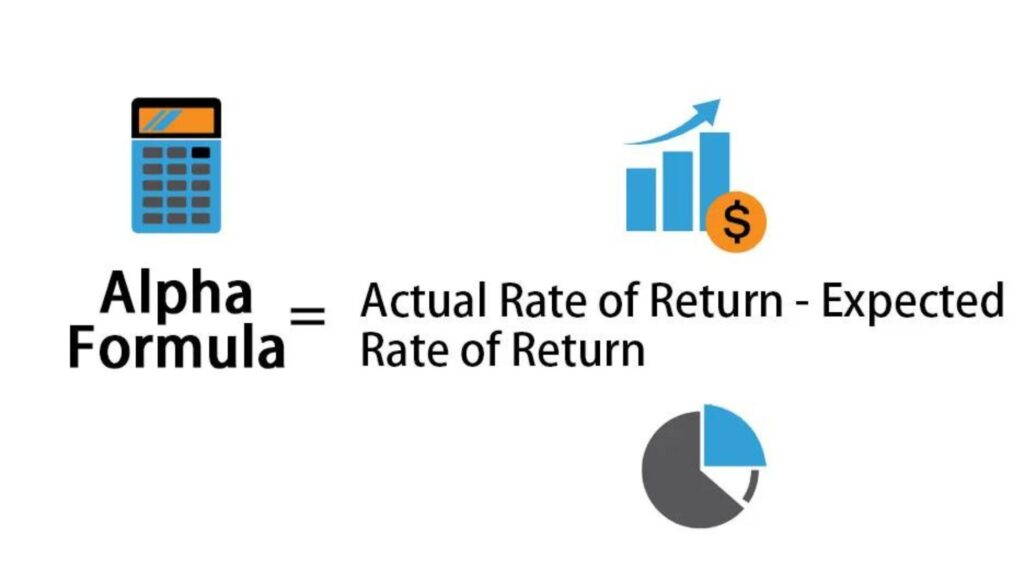Introduction to Alpha in Investing
When you dive into the world of investing, you’ll often come across the term “Alpha.” But what exactly is Alpha, and why is it so important for investors? In simple terms, Alpha measures the excess return on an investment compared to a market index or benchmark. It tells you whether a fund manager or individual investment is outperforming or underperforming the market, adjusting for the level of risk taken.
For example, if a portfolio has an Alpha of +3%, it means it outperformed its benchmark by 3%. On the other hand, a negative Alpha means the investment underperformed. This makes Alpha a vital concept, especially for those who aim to beat the market, which is often easier said than done!
If you want to read same article in hindi click here
Understanding Investment Performance Metrics
To fully appreciate Alpha, you need to understand the broader context of investment performance metrics. These metrics help investors evaluate how well a particular asset or portfolio is doing. Among these metrics, Alpha and Beta are the most commonly used.
- Alpha measures excess returns, taking risk into account.
- Beta, on the other hand, measures how volatile an asset is compared to the market.
While Alpha measures how much you’ve beaten the market, Beta shows how closely your investment tracks the market. Together, they give you a full picture of your performance.
How Alpha is Used in Portfolio Management
Portfolio managers, especially in actively managed funds, use Alpha to gauge the success of their investment strategies. In active management, the goal is to achieve a positive Alpha, as this signals that the manager is generating excess returns.
However, in passive management, investors may focus less on Alpha and more on tracking the index or benchmark. While passive investors are typically content to mirror market returns, those who employ an active strategy seek to “beat the market,” making Alpha their key metric.
The Formula for Calculating Alpha

Alpha isn’t just a vague idea; it’s based on a mathematical formula. Here’s the formula for calculating Alpha:
Alpha = (Portfolio Return – Risk-Free Rate) – [Beta × (Market Return – Risk-Free Rate)]
Let’s break down the components:
- Portfolio Return: The return generated by your investment or portfolio.
- Risk-Free Rate: The return on a “risk-free” investment, typically government bonds.
- Beta: A measure of the volatility of the investment relative to the market.
- Market Return: The return of a benchmark index, such as the S&P 500.
This formula allows investors to adjust for the risk they’re taking compared to the market and determine whether they’re outperforming it.
Examples of Alpha in Real-Life Investments
Alpha isn’t just theoretical; it plays a critical role in real-world investments. For instance:
- Mutual funds: Fund managers often aim to generate a positive Alpha by selecting stocks that they believe will outperform the market.
- Hedge funds and private equity: These investments often have a strong focus on generating Alpha, as they typically employ complex strategies designed to outpace traditional market returns.
Why Alpha Matters for Individual Investors
You might wonder: “Why should I, as an individual investor, care about Alpha?” The answer lies in how Alpha helps you assess the effectiveness of your investment strategies. For example, if you’re investing in mutual funds, a fund with a positive Alpha could signal that the manager is adding value beyond simple market exposure.
By comparing Alpha across different funds or portfolios, you can make more informed decisions and better understand whether you’re being adequately compensated for the risk you’re taking.
Alpha and Risk-Adjusted Returns
Alpha is a key part of understanding risk-adjusted returns. While raw returns tell you how much an investment has grown, risk-adjusted returns consider the level of risk that was taken to achieve those gains.
One popular measure of risk-adjusted returns is the Sharpe ratio, which divides excess returns by the investment’s volatility. Unlike Alpha, which focuses on performance relative to the market, the Sharpe ratio helps investors understand whether they’re getting compensated for the amount of risk they’re taking on.
Limitations of Alpha
Like any metric, Alpha has its limitations. For one, it only tells part of the story. Alpha is based on historical performance, meaning it might not predict future performance accurately.
Additionally, Alpha doesn’t factor in external events or market conditions that can dramatically influence returns. This is why it’s crucial not to rely solely on Alpha when making investment decisions.
Alpha in Efficient Market Hypothesis (EMH)
The Efficient Market Hypothesis (EMH) challenges the idea that Alpha can be consistently achieved. According to EMH, markets are efficient, meaning that all available information is already reflected in stock prices. Therefore, it’s nearly impossible to consistently generate Alpha without taking on more risk.
So, can you really beat the market, or is Alpha just an illusion? The debate rages on.
Active vs. Passive Investing: The Alpha Debate
This brings us to the active vs. passive investing debate. Active investors believe in the pursuit of Alpha, aiming to use skill, timing, and analysis to outperform the market.
Passive investors, on the other hand, are content to track the market using index funds, knowing that the vast majority of active managers fail to consistently generate positive Alpha.
How to Boost Alpha in a Portfolio
Improving Alpha can be challenging, but it’s not impossible. Some strategies to boost Alpha include:
- Stock picking: Identifying undervalued stocks that have the potential for growth.
- Diversification: Balancing risk across different asset classes to enhance returns.
- Market timing: Entering and exiting the market at optimal points.
Tools to Measure Alpha
To calculate Alpha, investors can use various platforms and tools, such as:
- Morningstar: A popular platform that provides detailed performance metrics for mutual funds, including Alpha.
- Yahoo Finance: Offers free tools to calculate and analyze Alpha for individual stocks or portfolios.
The Role of Alpha in Modern Portfolio Theory (MPT)
Modern Portfolio Theory (MPT) emphasizes diversification to reduce risk and optimize returns. While Alpha isn’t a core concept in MPT, it can be used to enhance portfolios by identifying investments that generate returns beyond what is expected given their risk level.
Common Misconceptions About Alpha
One common misconception about Alpha is that it’s the only metric that matters. While Alpha is important, focusing solely on it can lead to missing other vital aspects of portfolio performance, such as risk management and cost efficiency.
Conclusion
Alpha is a critical metric for understanding how well your investments are performing compared to the broader market. While generating consistent Alpha is challenging, it can provide a valuable edge in a well-constructed portfolio. Whether you’re an individual investor or a professional portfolio manager, understanding Alpha can help you make smarter, more informed decisions.
What is Beta and How to Use it in Stock Analysis
FAQs
- What is a good Alpha score in investing?
A good Alpha score is typically any positive number, as it indicates outperformance relative to the market. - Can Alpha be negative?
Yes, a negative Alpha means the investment underperformed its benchmark after adjusting for risk. - How often should Alpha be calculated?
Alpha should be calculated periodically, such as quarterly or annually, to assess performance trends. - Does Alpha account for investment risk?
Yes, Alpha adjusts for the risk taken, making it a useful tool for risk-adjusted performance evaluation. - Is Alpha the same for all types of investments?
No, Alpha can vary significantly depending on the asset class, investment strategy, and market conditions.


1 thought on “What is Alpha in Investing and How to Calculate It”